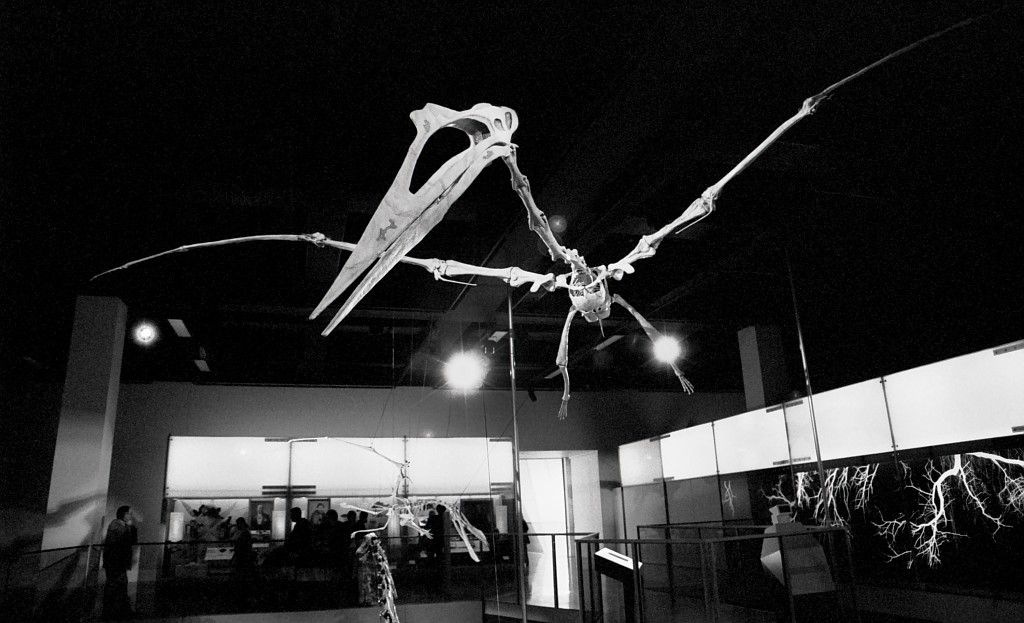Just three groups of animals with backbones have evolved the ability to fly: birds, bats, and pterosaurs. Pterosaurs are a reptile group related to the dinosaurs. Although they no longer grace our skies today, they were once, long ago, an incredibly varied and successful group of flying animals. They occupied ecosystems worldwide. Some were so small they would have easily fit in a human hand. Others were the largest animals ever to fly on Earth.
Paleontologists think that they emerged about two hundred and thirty seven million years ago, which would make them the first animals with backbones ever to take wing. The whole group perished sixty six million years ago by the same cataclysmic asteroid impact that claimed the dinosaurs and more than seventy five percent of all species on Earth at the time.
In nineteen seventy five, paleontologists working in Big Bend National Park in Texas discovered the fossil remains of the largest pterosaur ever found. The animal was named Quetzalcoatlus after the Aztec feathered serpent god Quetzalcoatl. These remains were more thoroughly analyzed by two studies published in twenty twenty one. Researchers estimate the animal’s wingspan at more than thirty feet—as big as a modern F-16 fighter jet—and they believe it could reach airspeeds of over sixty seven miles per hour.
Fossils of large pterosaur species have been found around the world. Pterosaurs flew on wings of skin, stretched between long skinny fourth finger bones and their hindlimb. Like modern birds, to save weight, their bones were thin and hollow. Since there are no modern fliers like pterosaurs, paleontologists can only hope to glimpse how they flew through the aid of computer models.










